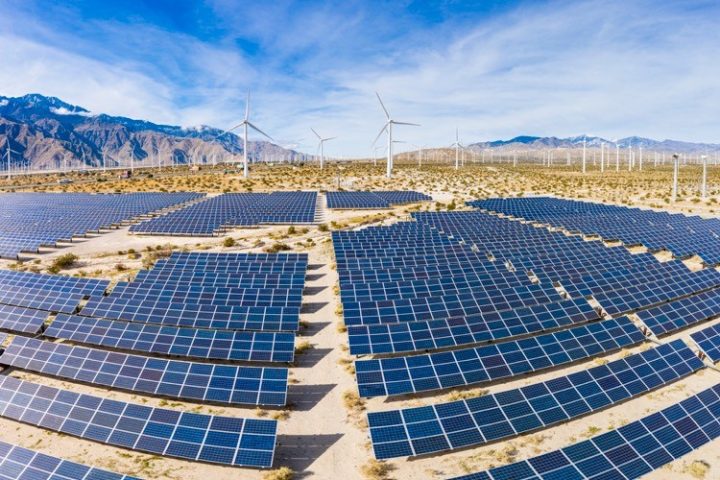
With all the talk about a “Green New Deal” and saving the planet from the scourge of fossil fuels, it’s only prudent to remember that those pie-in-the-sky “carbon neutral” technologies aren’t quite ready yet. As evidence of this, witness the recent bankruptcy of Tonopah Solar Energy, which operated the Crescent Dunes Solar Plant in Nevada.
The Chapter 11 bankruptcy was approved by Judge Karen Owens earlier this month. Tonopah received $737 million in guaranteed loans from the Obama administration. Under the terms of the restructuring is a settlement with the Department of Energy, which will leave taxpayers on the hook for as much as $234.68 million in outstanding debt.
Crescent Dunes also received an investment tax credit which was paid out in cash under the terms of the American Recovery and Reinvestment Act of 2009, aka the Obama stimulus legislation. Then, in 2017, the plant received another $275.6 million, which it used to pay off its outstanding liabilities. In other words, the taxpayers gave the company the money to pay off its taxpayer-backed loans.
Billed as the first plant to be able to store the sun’s energy, Crescent Dunes is a giant solar plant (1,670 acres) with a vast circular array of 10,000 mirrors, which was supposed to be able to deliver power 24 hours per day. Crescent Dunes was supposed to be able to store heat from the sun using molten salt to create steam, which would allow it to deliver power whether the sun was shining or not.
But the facility suffered a string of leaks in its hot salt tank, which is a key part of the plant’s energy storage system. When the plant was running from 2015-2019, it was selling power at $139 per megawatt-hour (MWh). On average, large solar energy plants today generally sell power for under $30 per MWh.
The plant was expected to deliver 482,000 megawatt-hours each year, but to date, it hasn’t produced that much power in its lifetime. When it did operate, the plant was plagued by equipment failures and regular outages. The plant’s sole customer, NV Energy, said that Crescent Dunes posed “the most significant risk” to meeting its renewable energy goals.
In the spring of 2019, the plant’s hot salt tanks suffered what owners referred to as “a catastrophic failure,” and the plant has not run since.
Under the terms of the bankruptcy, taxpayers can recover up to $100 million of our investment providing something extraordinary happens. First, the plant must be repaired and start operating again, which, after a “catastrophic failure,” doesn’t seem likely. Second, Tonopah Solar Energy must find a buyer for that power as NV Energy understandably terminated their power-purchase agreement.
The demise of another Obama-era “green energy” company brings to mind the spectacular failure of Solyndra, a maker of solar panels which fizzled out in 2011, leaving the American taxpayer half a billion dollars poorer. The failure of Solyndra was a big talking point during the 2012 election that pitted Obama against Republican Mitt Romney. But that was not the only green-energy failure for Obama.
A123 Systems, a maker of electric batteries for a variety of uses, was forced to file for Chapter 11 bankruptcy protections in October of 2012 after receiving a $249-million stimulus grant. Since the federal investment came in the form of a grant, that investment was completely lost to taxpayers. The company was eventually purchased by Chinese investors and remains open today as a private entity.
Abound Energy was a manufacturer of solar panels that received a $400 million Department of Energy stimulus loan guarantee. Citing strong competition and a collapse in the price of solar panels, the company shut its doors and declared bankruptcy in 2012, with the taxpayer on the hook for approximately $70 million.
Ener1, another battery maker, received a $118.5 million federal grant to manufacture batteries and electric vehicles. The company declared bankruptcy in 2012, was bought by a Russian investor, and still makes batteries — but no vehicles — today. As Ener1’s funding was received in the form of a grant, the taxpayer was again left holding the bill.
As the Wall Street Journal’s editorial board notes, “The Crescent Dunes failure shows again what happens when government invests in commercial ventures beyond its expertise for political purposes. Scarce resources are misallocated and taxpayers lose. We wish we could say the politicians have learned from the failure, but the Biden administration is coming to town promising much more of the same.”
It’s yet another reminder that the “carbon neutral” technologies that green activists and leftist politicians are always crowing about don’t actually exist yet. Perhaps they will someday, but the American people — and the people of the world, for that matter — cannot afford to keep throwing money at them until they do.




